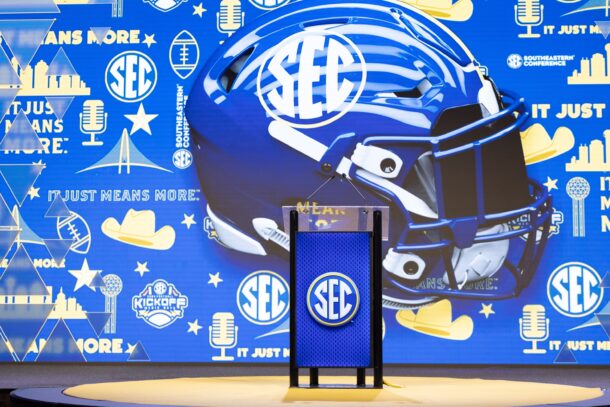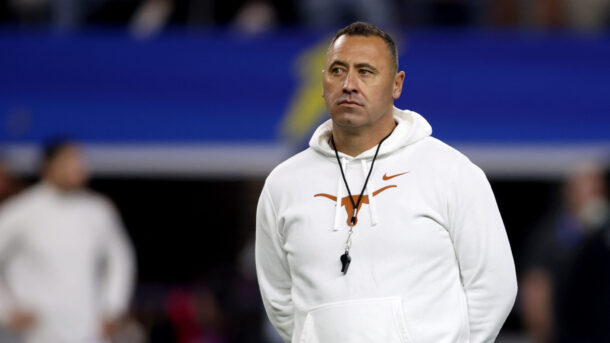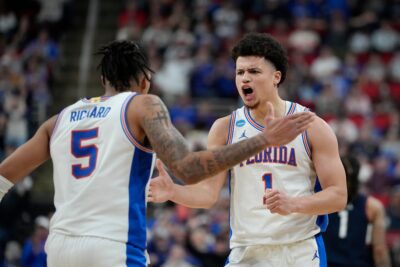Ad Disclosure
Alright everyone, circle up and listen up.
We’re about to tell some stories of a simpler time in SEC football, when teams were without mascots until someone came along and had a great idea at each of these schools.
Here is the breakdown of how each school arrived at its current nicknames and mascots:
Alabama Crimson Tide

Photo: bristol2bama.wordpress.com
Mascot: Big Al
Origin date: 1930
Short version of the story: Everett Strupper, a sportswriter from the Atlanta Journal, tagged the Alabama offensive line as the “Red Elephants” during 1930’s 10-0 season. It grew from there.
Long version of the story: Here
Arkansas Razorbacks

Photo: uark.edu
Mascot: Tusk
Origin date: 1909
Short version of the story: Former Arkansas coach Hugo Bezdek said his team played “like a wild band of Razorback hogs” following a win against LSU in 1909. Razorbacks was voted in to replace “Cardinals” as the mascot the following year.
Long version of the story: Here
Auburn Tigers

Photo: auburn.edu
Mascot: Aubie
Origin date: 1892
Short version of the story: The origin of the nickname is believed to be found in an 18th century poem by Oliver Goldsmith titled “The Deserted Village.” An excerpt includes the line: “Where crouching tigers wait their hapless prey.”
Long version of the story: Here
FLORIDA GATORS

Photo: Kim Klement – US Presswire
Mascot: Al
Origin date: 1908
Short version of the story: Austin Miller, a former Gainesville native and Virginia law student, chose the mascot while helping his father purchase some pennants to bring back to Florida to sell in his store. They chose Gators because of the animal’s population in the state and the lack of another team having the mascot.
Long version of the story: Here
GEORGIA BULLDOGS

Photo: thecardinalconnect.com
Mascot: Uga and Hairy Dawg
Origin date: 1894
Short version of the story: Georgia’s website admits that there are contradicting stories about the origin of the nickname “Bulldogs.” One prominent theory traces it back to a dog named Trillby, which served as a campus pet for a fraternity.
Long version of the story: Here
KENTUCKY WILDCATS
Photo: uky.edu
Mascot: Scratch
Origin date: 1909
Short version of the story: Following a 6-2 win against Illinois in 1909, Commandant Carbuiser told a group of students at a chapel service that the football team had “fought like wildcats.” As the media and fans picked up on it, the university adopted the nickname.
Long version of the story: Here
LSU TIGERS

Photo: campusriot.com
Mascot: Mike
Origin date: 1896
Short version of the story: A reference given to Louisiana troops during the Civil War, the Tigers became the nickname of LSU when the school’s first football coach, Charles E. Coates Jr., decided the program needed a ferocious animal as its mascot. He said the purple and gold school colors most closely resembled a tiger.
Long version of the story: Here
MISSISSIPPI STATE BULLDOGS

Photo: haikudeck.com
Mascot: Bully
Origin date: 1905
Short version of the story: While Mississippi State did not adopt the Bulldogs as its official mascot until 1961, the school has used the nickname interchangeably with “Maroons” and “Aggies” since as early as 1905, when the school was known as Mississippi A&M.
Long version of the story: Here
MISSOURI TIGERS
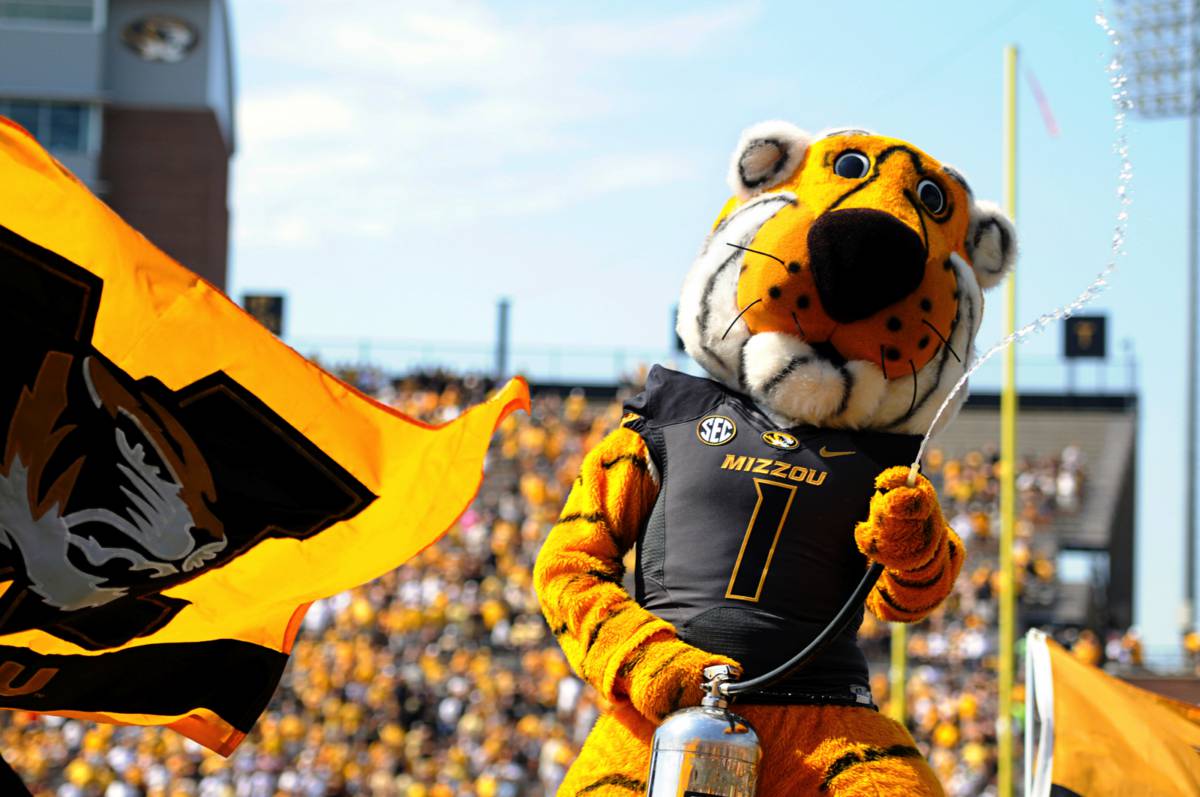
Photo: missouri.edu
Mascot: Truman
Origin date: 1894
Short version of the story: The nickname “Tigers” originates from a group of civilians from Columbia, Mo., who fortified the town hall after being alerted of potential guerrilla attacks during the Civil War. Truman, who came around almost 100 years later, is named after Missouri-born President Harry S. Truman.
Long version of the story: Here
OLE MISS REBELS

Photo: memphisport.com
Mascot: Rebel Black Bear
Origin date: 1936
Short version of the story: The nickname Rebels has been with the program since suggested by Judge Ben Guider of Vicksburg in 1936. Up until 2003, Colonel Reb was the team’s mascot. He was removed due to perceived racial implications (he was deemed to carry the appearance as both a Confederate solider and plantation owner). After a student vote, Rebel Black Bear became the official mascot in 2010.
Long version of the story: Here
SOUTH CAROLINA GAMECOCKS

Photo: pinterest.com
Mascot: Cocky, Sir Big Spur (not Lee Corso)
Origin date: 1900
Short version of the story: The nickname “Fighting Gamecocks” was first used in 1900 as a reference to Revolutionary War General Thomas Sumter, who was a South Carolina native that carried the nickname “The Fighting Gamecock.”
Long version of the story: Here
TENNESSEE VOLUNTEERS

Photo: wbir.com
Mascot: Smokey
Origin date: 1902
Short version of the story: Named after the large number of Tennesseans that answered the call when President James Madison asked for volunteers to help fight the war of 1812, the Tennessee football program first used the “Volunteers” moniker in 1902. The introduction of a coonhound as a mascot didn’t come until 1953.
Long version of the story: Here
TEXAS A&M AGGIES
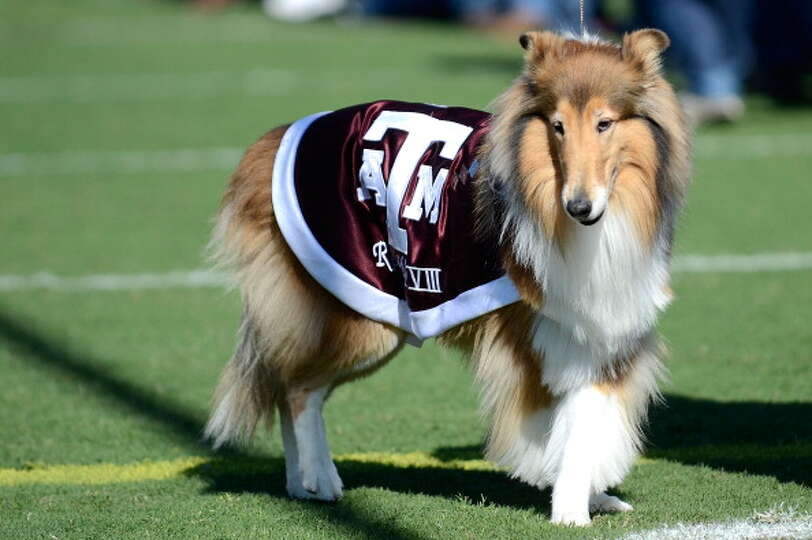
Photo: chron.com
Mascot: Reveille
Origin date: 1931
Short version of the story: The school, which goes by a shortened term of “Agricultural and Mechanical” for its nickname “Aggies,” has featured Reveille as its mascot since 1931 when a group of cadets picked up a stray dog and brought it back to campus. The dog, which is now a full-blooded Collie, is the highest ranking member of the school’s Corps of Cadets.
Long version of the story: Here
VANDERBILT COMMODORES

Photo: vucommodores.com
Mascot: Mr. Commodore
Origin date: 1873
Short version of the story: Vanderbilt’s nickname is a tribute to university founder Cornelius Vanderbilt. Though the shipping and railroad mogul was not a member of the Navy, he did donate a steamship to Union troops during the Civil War. Interestingly enough, Vanderbilt used several dogs as a mascot before settling on a costumed Naval officer to roam the sidelines.
Long version of the story: Here
Nick Cole is a former print journalist with several years of experience covering the SEC. Born and raised in SEC country, he has taken in the game-day experience at all 14 stadiums.

